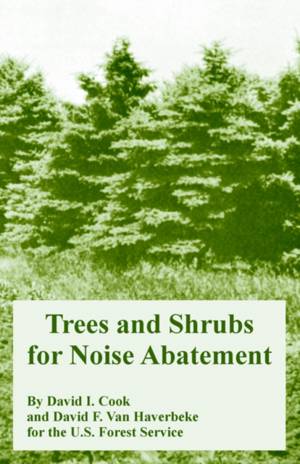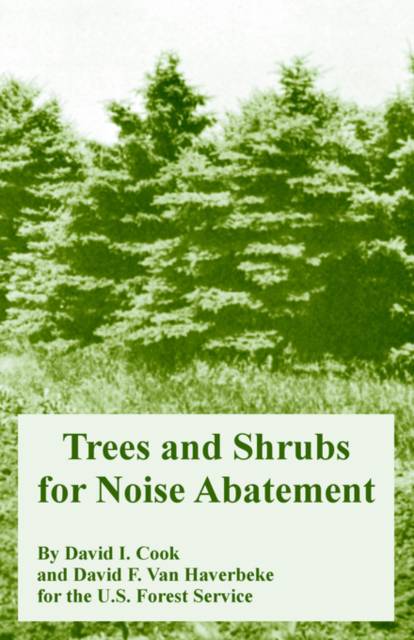
- Afhalen na 1 uur in een winkel met voorraad
- Gratis thuislevering in België vanaf € 30
- Ruim aanbod met 7 miljoen producten
- Afhalen na 1 uur in een winkel met voorraad
- Gratis thuislevering in België vanaf € 30
- Ruim aanbod met 7 miljoen producten
Zoeken
Trees and Shrubs for Noise Abatement
U S Forest Service, David I Cook, David F Van Haverbeke
Paperback | Engels
€ 24,45
+ 48 punten
Omschrijving
The potential value of trees and shrubs, as determined from a study of a variety of shelterbelts and urban screen plantings in southeastern Nebraska, appears to be very good. Reductions of sound levels (attenuations) in the order of 5 to 8 decibels are common, and attenuations of 10 decibels (approximately half as loud) are not unusual for wide belts of tall, dense trees. When the difference in level is based on a comparison of tree-shrub-grass combinations with hard surfaces, the worth of trees and shrubs is even more evident and attenuations of 8 to 12 decibels are common. Occasional reductions of 15 decibels or greater (1/3 as loud) have been noted but these are attributed to exceptionally advantageous temporary atmospheric conditions. The relative effects of tree species, height and belt width are discussed in some detail. In general, wide belts of tall trees are most effective. Species do not appear to differ greatly in their ability to reduce noise levels, provided deciduous varieties are in full leaf. Thus, evergreens are desirable for year-round noise screening. Relative placement of noise screens between sound source and protected area is of great importance; a screen placed relatively close to a noise source is more effective than one placed close to an area to be protected.
Specificaties
Betrokkenen
- Auteur(s):
- Uitgeverij:
Inhoud
- Aantal bladzijden:
- 84
- Taal:
- Engels
Eigenschappen
- Productcode (EAN):
- 9781410218209
- Verschijningsdatum:
- 4/11/2004
- Uitvoering:
- Paperback
- Formaat:
- Trade paperback (VS)
- Afmetingen:
- 140 mm x 216 mm
- Gewicht:
- 117 g

Alleen bij Standaard Boekhandel
+ 48 punten op je klantenkaart van Standaard Boekhandel
Beoordelingen
We publiceren alleen reviews die voldoen aan de voorwaarden voor reviews. Bekijk onze voorwaarden voor reviews.











